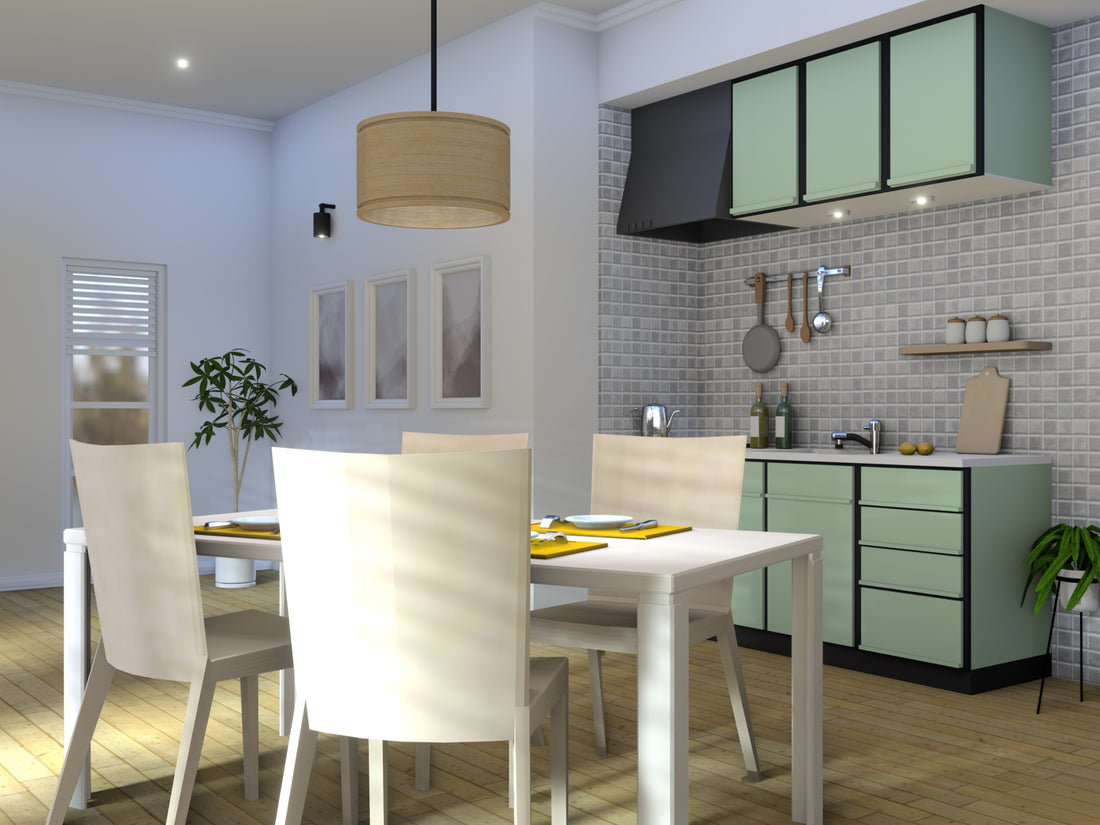In this article, we’ll explain the basics and tips for interior design, whether it’s for a newly built home or a renovation. Interior design encompasses more than just color schemes—it involves everything from furniture placement to lighting and decor. Simply focusing on color or furniture placement without considering lighting or other elements will result in a disjointed and unsatisfactory design.
In this article, we’ll gradually cover each element of interior design, starting with the basics. This will serve as an introductory guide, and we’ll expand on each element in future posts.
1. What is Interior Design?
Before we dive in, let’s review the meaning of "interior design." Interior design refers to everything that makes up the decor of an indoor space, including:
- Wallpaper and wall finishes
- Flooring
- Fixtures like kitchen appliances
- Curtains
- Lighting fixtures
- Furniture like tables and chairs
- Decor items
- Storage solutions
- Electronics
- Plants
- Carpets and rugs
All of these elements contribute to your interior design. A well-coordinated design enhances comfort, functionality, individuality, and convenience. Even if the color scheme is perfect, poor functionality will make the design a failure. Always keep this in mind as you study interior design.
2. When to Decide on Your Interior Style for a New Home?
If you're building a new home, when should you finalize your interior design? The answer is "during the layout discussions with your builder." The interior design affects various aspects like layout, color schemes, and equipment choices. Many people wait until choosing curtains or furniture, but this is often too late. You should ideally start thinking about the design during or even before layout discussions.
3. What Should You Consider for Interior Design?
Next, let’s look at the key elements you should focus on when planning your interior:
- Style and direction
- Color schemes
- Furniture layout
- Storage
- Lighting
These are the basics. Missing any of these will create an incomplete design. By focusing on these key areas, your interior will come together harmoniously.
4. The Most Important Element: Style and Direction
The first and most crucial step is deciding on your interior style and direction. Whether you're aiming for "modern," "natural," "Asian," or "rustic," understanding the elements that define these styles is key. The four main factors that influence style are:
- Materials
- Textures
- Shapes
- Colors
Balancing these four elements is the foundation of your interior design.
4.1 Materials
The materials you choose greatly impact the look and feel. Natural materials like wood or linen create a "natural" or "rustic" vibe, while artificial materials like steel or glass lend a "modern" or "minimalist" feel.
4.2 Textures
Textures—from furniture to wallpaper—add character. Rough textures can create a natural feel, while smooth materials offer a sleek, modern look.
4.3 Shapes and Lines
The shapes of furniture and decor—whether straight or curved—also influence the style. Curved lines are often associated with a natural style, while straight lines lean toward modern aesthetics.
4.4 Colors
Colors aren't just about hues; they're also about brightness, saturation, and whether they feel natural or artificial. White and black create a modern vibe, while earthy tones lean toward a rustic style.
5. Tips for Choosing Color Schemes
Once you’ve chosen a style, you’ll need to think about your color scheme. A popular rule in interior design is the "60:30:10" color ratio, where 60% is the base color, 30% is the main color, and 10% is the accent color. For example, in a living room, 60% might be white (walls and floors), 30% could be wood tones (furniture), and 10% could be green (plants or accessories). This balance ensures a harmonious and visually appealing space.
6. Furniture Layout Basics
When arranging furniture, consider how the pieces align with the chosen style and colors. You don’t have to purchase all your furniture at once; adding pieces gradually is fine. For new homes, planning the layout during the initial design process helps create smooth, functional spaces. Symmetry is a useful rule: aligning furniture symmetrically (such as around a central window or TV) instantly creates a polished look.
7. Storage and Interior Design
No matter how beautiful your design, clutter can ruin it. Well-planned storage is essential to maintaining a neat and functional space. Design the layout with sufficient storage in mind to prevent clutter and maintain organization.
8. Choosing the Right Lighting
Lighting is one of the hardest yet most important aspects of interior design. It’s often difficult to visualize how a space will look until the lights are installed. When selecting lighting, consider both the brightness and whether the fixture matches the overall aesthetic. The main lighting (such as ceiling or pendant lights) should brighten the entire room, while supplementary lighting (like floor lamps or spotlights) adds depth and enhances ambiance.
9. Conclusion
This article has covered the basics of interior design, but there's so much more to explore. Interior design is a broad and deep subject, so it’s important to seek advice from experts, such as designers and furniture salespeople, when needed. However, make sure your family discusses and decides on the general direction and style—this will make it easier for professionals to help you create the perfect space.

